Sheena Bora, the Mumbai girl allegedly murdered by her own mother, was a troubled teenager and fought for acceptance and love and care of her parents. The diary entries Sheena made as a young girl in Guwahati first expresses her love for Indrani, and then later in life, her hate for her mother.
In her diaries, accessed by dna, Sheena jotted down study notes, slam notes from friends, phone numbers and letters to her father. It is apparent that she was sad about not being around her biological father Siddhartha Das and repeatedly urged him to come and visit her. This is contrary to what Siddhartha Das told the media about his correspondence with Sheena Bora being barely in touch with him.
In fact, in one of her earlier entries, she writes that she is angry with him. “Daddy, I am very angry with you. O.k. I didn’t get any time to write any letter to you but you should have written to me. Very mean ha! Well, even I am sorry for not writing any letter to you. In Class X, we have to work very hard. In the morning at 7.30. We have to go to school and again I have to attend my maths coaching class 3 O’clock to 4.30 pm and again from 6 O’clock to 8 O’clock my science coaching class. I reach home at about 8.30 pm. Hope you can imagine how hard I’m working.”
Sheena started writing her diary sometime in 2003, when she was in standard X. Her letters to her father reflects that she had great expectations from him. It seems that she first drafted letters to her father in diary and then posted them to him.
She writes: “Daddy, I’ve cut my nails and I haven’t grown them long. I’m following your advice – first studies then style. I know you have a lot to tell me but daddy don’t write anything in any of your letter. I hope you’ll come once before my HSLC exams. Why don’t you make a trip to Guwahati in December. Then you can tell me everything you wanted me to know.”
In another ‘draft’ letter, Sheena enquires from Sidharth which caste she belongs to! “Daddy actually I’m facing a problem. For my HSLC, I’m to fill up some forms and there we are to write to which caste we belong. Daddy, I’m really very confused for I am not sure about my caste. We have got the options – Schedule/OBC/…,” she writes.
In another entry, from the time when she had just appeared for her pre-boards, usually held by the school, she writes that she was sick and could not study much, and that she scored 84%. She even kind of scolded her father for depending on her maternal uncles. She pleaded that he should not start a new venture with two of her mamas, because one of them is looking for a job and will jump the gun the moment he lands a good one. “Don’t you have the capability of starting something from (sic) your own instead of depending upon others,” she asks. She further asks him to give up the job at HITACHI KK and look for a better one.
But then, in the same letter to her father, she turns sheepish. “Oh! It seems as if I am trying to guide you,” she writes.
Sheena then asked him to try and get a certificate, “because this certificate could provide me with scholarships for my further studies,” she writes. She tells him that there are lot of expenses, and that he should do this for her future. The diary entry is marked June 28, 29 and 30.
Given the contents of the letters to her father, it seems that she was in touch with Siddharth Das. An old classmate of Sheena, who now lives in North India, corroborated the same. “I met him in Sheena’s house in 2001, when we were in the eighth standard. She introduced him to me as her father,” said the friend.
In one of her later entries, which looks like it was written when she was studying for the board exams in the tenth standard, after her pre-board exams, she said that she does not know how to look for envelopes, and so has been unable to send letters. In the entry, in which she looks like she is unhappy with her grandparent’s attitude towards Siddharth, she tells him that she wants to talk with Siddharth but cannot ring him up. “They say you are no good, and they don’t like you. But my conscience does not allow me to believe them,” she wrote.
She goes on to say that she does not know much about her mother. She writes that she doesn’t know whether her mother remembers her or not, but because Indrani is her mother, she “is I the corner of my heart,” she writes. It must be added here that Sheena also kept clippings of news reports of her mother. News reports of INX media launching new channels, of Indrani being considered WSJ’s most powerful women with Indra Nooyi and others, etc. were kept by Sheena in a folder.
But she was very lonely as a child. She writes: “Oh! Happy Birthday to me! But I am not happy. It seems as if I have got nothing in my life. Nothing! My future seems very bleak to me. Just depression has encircled me from all sides. Disgusting life it is. I hate my mother, that bloody b***h. She is not a mother. She is a witch…”
Sheena was also not happy when Indrani married Peter Mukerjea. “And now she got married with that old man (Peter Mukerjea). Her this act to Aita & Kaka (Sheena’s grandparents) seems very prestigious, very wise, but not in case of me (Read: my grandparents may find this prestigious or wise, but not me). I hate her. I wish her soul gets condemned and even in hell. I have much grief, much tears to flow but when, where and in front of whom.”
NEW DELHI: A three-member Hurriyat delegation from the hardline Syed Geelani faction met the Pakistan high commissioner, Abdul Basit, Tuesday. The delegation also handed over a letter from Geelani to Pakistan PM Nawaz Sharif.
This was the first meeting between the Pakistan envoy and Hurriyat leaders since the collapse of NSA dialogue last month.
“We handed over Geelani sahab’s letter for PM Sharif to the officials at the Pakistan High Commission in New Delhi,” Ayaz Akbar, spokesperson for the Hurriyat Conference, said in a statement on Wednesday.
Geelani’s top aides — Ayaz Akbar, Peer Saifullah and Altaf Ahmad — met Basit at his office and stayed for more than an hour.
“The letter is confidential but highly important,” Akbar told a news agency.
“Officials at the high commission assured us that the letter will be dispatched to the Pakistan prime minister on Wednesday,” Akbar said.
?While India and Pakistan had agreed to a meeting between Pakistan NSA Sartaj Aziz and his counterpart Ajit Doval on August 24, the dialogue couldn’t took place after Pakistan backed out citing India’s “preconditions” – that Aziz not meet Hurriyat leaders before the talks and that agenda be restricted to terror. Geelani himself was scheduled to meet Aziz hours before the NSA talks on August 24.
Mumbai: Ten days after being grilled by the Mumbai Police over her role in the murder of her daughter Sheena Bora, TV tycoon Indrani Mukherjea is said to have admitted to her role in the murder. Police sources say that Indrani has told the police of the circumstances behind Sheena’s murder.
Indrani has been accused of murdering Sheena along with her ex-husband Sanjeev Khanna and her driver Shyam Rai.
A local court had earlier extended the police custody of the three accused – Indrani, Sanjeev Khanna and Shyam Rai – till September 5.
Peter Mukerjea, who has been married to Indrani for 13 years and set up a media company with her, had first said that he was unaware that Sheena was his wife’s daughter and that Indrani had introduced her as her sister.
A few days after Indrani’s arrest, Peter amended his version to say Sheena did inform him that she was his step-daughter, but he had no reasons not to believe his wife Indrani’s denial of that claim though he found it “difficult to digest”. He claimed that the same thing was communicated to him by his son Rahul Mukerjea, but he had not believed him as well.
Peter maintained that he vaguely remembered the date when he was told about the fact and it was sometime in 2011.
Sheena Bora was in a relationship with Rahul, Peter Mukerjea’s son from an earlier marriage, when she was allegedly murdered on April 24, 2012. The 24-year-old was allegedly strangled in a car, then her body was burnt and dumped at a forest in Raigad, about 84 km from Mumbai.
Her purported remains were found a month later and buried by the police, which treated the body as unclaimed. For three years, Indrani Mukerjea told her family and friends that Sheena had shifted to the US.
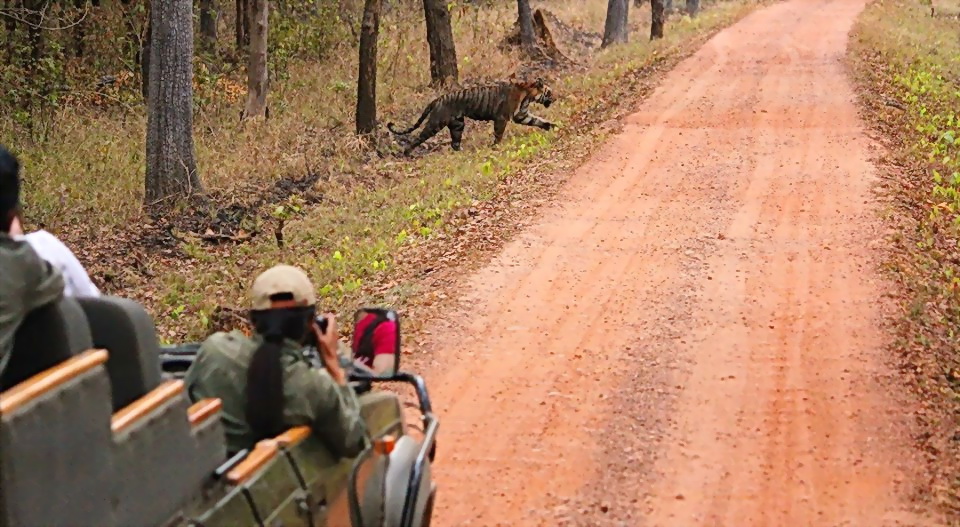
Ratna Singh the daring girl who chose to become a naturalist in spite of having a degree in International Law. Perhaps the surroundings of Bandhagarh National Park where she was brought up brought her back to nature. She truly loves nature and in the course of conversation she stresses that the comfort of the cities with internet, wifi Skype is not available but the fresh aroma and air of the jungles and its animals is no comparison to these materialistic things.
Tara Singh started her career as Safari Guide in 2006 when she was the first lady in the profession. In a question as to how difficult it was as a female to join this profession she says her immediate family members had no objection but the far off relatives were a bit apprehensive. But later on as she progressed everything settled down. She here also makes it a point that the gender issue in the cities is more prevalent than in the villages and tribal people. The tribals have gender equality. At first the tribals were a bit apprehensive too but as time went by and the activities like tracking animals that she showed in her performance they were impressed. In fact because of her performance she was more respected than her male counter parts.
When RealNews of India asked how difficult it is to work in the jungles. Prompt came the reply you have to understand the nature and the jungle. She further added the caution is required. We have to check the ground for snakes, feel the smell of animals and guess the distance. She even shared a scary incident to Real News. After attending a party she was returning back to her quarters she felt a big shadow of a leopard appear in front of her. She remained still. With animals if you move or start running they will come after you. So she remained still for ten minutes and was a bit relieved. Just to ensure more of her safety she added ten more minutes then she heard footsteps first, at slow space then becoming faster and more distant. She now knew that the leopard and left and now she was safe.
As a naturalist she encourages city people to visit such wildlife sanctuaries to be away from the wild traffic, the congestion and time bound life. She says you have to feel the fresh air and the surrounding and you will love it Ratna further says.
She along these years has also imparted training to a number of females. Ratna says women become better naturalist as they are more hardworking and patient.
Comparing wildlife to Africa and Australia Ratna defines that they are much better in terms of variety and the laws relating to wildlife is stricter in India. However there are two rare species that others do not have, that is the tiger and bear. The tiger and deer are found in Central and North India.
In a question as to how these wildlife sanctuaries effect the fast moving development of a country Ratna says it is a difficult equation for the government, but if we cannot breathe then what sense does modernization make, Ratna says, making the whole world wake up and realize.
Congress President Sonia Gandhi today extended greetings to the people on the occasion of Raksha Bandhan and hoped the festival will strengthen bonds between people.
Gandhi described the festival as a “celebration of mutual bonding between people, as indeed the affection between a brother and a sister”.
She hoped the festival “as always will foster bonds and honour amongst people”.
Raksha Bandhan festival is being celebrated today.
On the occasion of Raksha Bandhan, sisters tie ‘rakhi’ (sacred thread) on the wrists of their brothers which symbolises their love for them while the brothers promise to protect them always.PTI
NEW DELHI: A retired army havildar who was on a relay hunger strike as part of agitation by veterans for early implementation of ‘One Rank One Pension’ was on Saturday rushed to the Army hospital after his health deteriorated.
“Havildar Abhilash Singh has been taken to hospital. He was on relay hunger strike,” an official from the United Front of Ex-Servicemen, the umbrella organisation of veterans carrying out the protest, said.
Besides Singh, four others who were on fast-unto-death have been admitted to hospital after their health deteriorated.
The deadlock over OROP continues even as the protest entered its 76th day on Saturday.
Yesterday the government had sought “some more time” to roll out OROP.
Close to 22 lakh retired servicemen and over six lakh war widows stand to be the immediate beneficiaries of the scheme, which envisages a uniform pension for the defence personnel who retire in the same rank with the same length of service, irrespective of their date of retirement.
Currently, the pension for retired personnel is based on the Pay Commission recommendations of the time when he or she retired. So, a Major General who retired in 1996 draws less pension than a Lt Colonel who retired after 1996.
Just like senior Kareena Kapoor, junior Kareena Kapoor aka Alia Bhatt is obsessed with fashion. She loves experimenting with her style and we must say her experiments do pay off really well! Even when she sported Stuart Weitzman knee high, shinning metal gladiator sandals teamed with Khakhi shorts and olive shirt, she made many heads turn. She was just being casual but her gladiators deserved a second look. She even flashed these gladiators at a promotional event of Humty Sharma Ki Dulhania paired with a short dress. She looked stunning in both the attires,
KATHMANDU/SINDHUPALCHOWK, Nepal (Reuters) – Nepali villagers blocked trucks carrying supplies for earthquake victims on Wednesday, demanding the government do more to help after last week’s disaster left more than 5,200 people dead and tens of thousands homeless and short of food and water.
In the capital Kathmandu, about 200 people protested outside parliament, asking for more buses to go to their homes in remote parts of the Himalayan nation and to hasten the distribution of aid that has flooded into the country but been slow to reach those in need.
In Sangachowk village in one of the worst-hit districts, about three hours by road from the capital, scores of angry villagers blocked the road with tires.
They stopped two trucks headed for the district capital with rice, noodles and biscuits. Later they blocked a convoy of three army trucks with relief supplies, leading to a tense standoff with armed soldiers.
“We have been given no food by the government,” said Udhav Giri, 34. “Trucks carrying rice go past and don’t stop. The district headquarters is getting all the food.”
The government was struggling to fully assess the devastation wrought by Saturday’s 7.8 magnitude quake.
“This is a disaster on an unprecedented scale. There have been some weaknesses in managing the relief operation,” Nepal’s Communication Minister Minendra Rijal said late on Tuesday.
An official from Nepal’s home ministry said the number of confirmed deaths had risen to 5,238 by Wednesday night. Almost 10,350 were injured in Nepal, and more than 80 were also killed in India and Tibet.
Prime Minister Sushil Koirala has told Reuters the death toll could reach 10,000, with information on casualties and damage from far-flung villages and towns yet to come in.
That would surpass the 8,500 who died in a 1934 earthquake, the last disaster on this scale to hit the Himalayan nation of 28 million people located between India and China.
However, there were signs on Wednesday that Kathmandu was slowly returning to normal. Some people prepared to head home to sleep after spending the last four nights in the open out of fear their damaged homes may not be able to withstand aftershocks.
Some street vendors started selling fruit in the city, but others said they were too scared to open shops because buildings had been so badly damaged.
“I want to start selling, I have children at home, but how can I open a shop where it is risky for me to sit inside?” said Arjun Rai, a 54-year-old who runs a general store.
In some mountainous areas, the government has struggled to deliver aid. Rescue helicopters have had problems landing at some sites.
Shambhu Khatri, a technician on board one of the helicopters, said entire hillsides had collapsed in parts of the Gorkha district, burying settlements, and access was almost impossible.
FEAR OF DISEASE
In Kathmandu and other cities, hospitals quickly overflowed with injured soon after the quake, with many being treated out in the open or not at all.
Guna Raj, who works for a Kathmandu-based NGO specialising in providing sanitation, said there have been outbreaks of diarrhoea in relief camps because of a shortage of toilets and clean water.
“In the next few days or weeks I am sure there will be an outbreak of epidemics,” said Raj, who is involved in the relief effort.
Foreign Secretary Shanker Das Bairagi appealed for specialist doctors from overseas, as well as for search-and-rescue teams despite earlier suggestions from officials that Nepal did not need more such assistance.
“Our top priority is for relief and rescue teams. We need neurologists, orthopaedic surgeons and trauma surgeons,” Bairagi said. Experts from a Polish NGO that has an 87-strong team in Nepal have said the chances of finding people alive in the ruins five days after the quake were “next to zero”.
Nevertheless, a Nepali-French rescue team pulled a 28-year-old man, Rishi Khanal, from a collapsed apartment block in Kathmandu on Tuesday after he had spent around 80 hours trapped in a room with three dead bodies.
Doctors amputated one of his legs on Wednesday because of damage from prolonged internal bleeding.
Tensions between foreigners and Nepalis desperate for relief surfaced, rescuers said, as fresh avalanches were reported in several areas.
Members of Israeli search-and-rescue group Magnus said hundreds of tourists, including about 100 Israelis, were being airlifted out of Langtang in Rasuwa district, a popular trekking area north of Kathmandu hit by a fresh avalanche on Tuesday.
Fights had broken out there because of food shortages, Magnus team member Amit Rubin said. One of the trekkers said there had also been scuffles over places on the rescue helicopters.
The quake also triggered an avalanche on Mount Everest that killed at least 18 climbers and guides, including four foreigners, the worst disaster on the world’s highest peak.
New Delhi, Aug 26 (PTI) Glasgow Commonwealth Games gold medallists Sivalingam Sathish Kumar and Khumukcham Sanjita Chanu will spearhead the Indian attack at the IWF Senior World Weightlifting Championships at Houston, USA, which will also double up as the qualification tournament for next year’s Rio Olympics.
A 14-member team will vie for top honours besides Olympic berths for the country at the World Championships to be held from November 10 to 29.
Besides 14 weightlifters (seven male and seven women), the contingent will also comprise four coaches, one masseuse and one physiotherapist.
Before the World Championships, the entire team will undergo a short-term foreign training camp to prepare for the prestigious event.
The squad:
Men: Sukhen Dey (56kg), Jamjang Deru (56kg), Apurba Chetia (62kg), Deepak Lather (62kg), Papul Changmai (69kg), Sivalingam Sathish Kumar (77kg) and Kojum Taba (77kg).
Women: Khumukcham Sanjita Chanu (48kg), Saikhom Mirabai Chanu (48kg), Matsa Santoshi (53kg), Bangaru Usha (53kg), Pramila Krisani (58kg), Minati Sethi (58kg) and Punam Yadav (63kg).
Coaches: Vijay Sharma, Kunjarani Devi, Sandip Kumar and Balwinder Singh Mehdwan.
Physiotherapist: Aakrant Saxena and Masseuse: Nepram Renubala Chanu
New Delhi, Aug 26 (PTI) National carrier Air India is likely to seek more time from Boeing for taking a final call on the firm’s proposal offering it 11 single-aisle aircraft in lieu of three wide-body B777s, which were a part of a 68-aircraft order placed in January, 2006.
The airline has constituted a three-member panel to go into the pros and cons of the proposal, which has been pending for nearly four years, Air India sources said today.
Boeing had asked the airline to take a final decision on the long-pending proposal by this month.
Air India had initially planned to cancel the order for the three B777s following the downturn in aviation sector worldover in 2008 but had to deferred the deliveries as there was no “cancellation clause”, the sources said.
Later, the US aircraft maker offered Air India to convert this order into an order for 11 Boeing 737 MAX aircraft.
“Air India has sought an extension in the deadline as it wants the new chairman and managing director (CMD) to take a call on such an important issue,” one of the sources said.
Air India CMD Rohit Nandan has set up a committee of three functional directors to go into the proposal and submit the report in this regard, they said.
As part of its fleet expansion plan, the national carrier had in 2006 placed orders with Boeing for 68 aircraft: 27 Dreamliners, 15 B777-300ERs, eight B777-200LRs and 18 B-737- 800s. Of these, eight B777-200LRs, 21 Dreamliners and 18 B-737-800s have already been delivered.
Single-aisle aircraft Boeing 737 MAX has a maximum seating capacity of 180 passengers while Boeing 777-300ER has a seating capacity of 230 plus, the sources said.
In 2013, Air India sold its five Boeing 777-200LRs to Etihad for around USD 350 million.


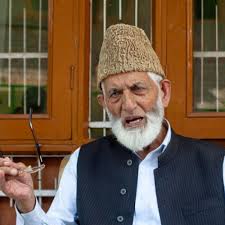
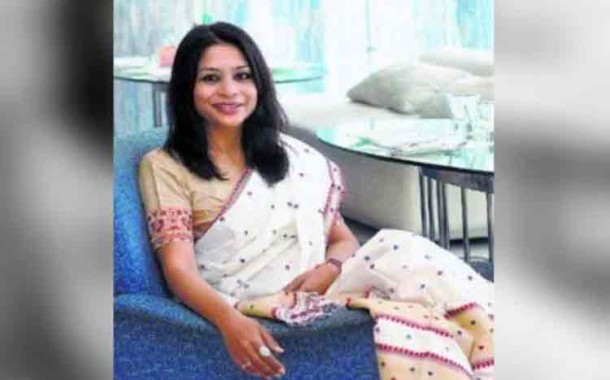
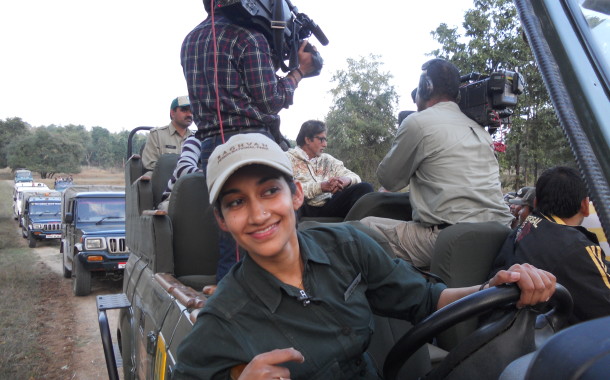
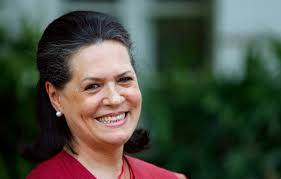
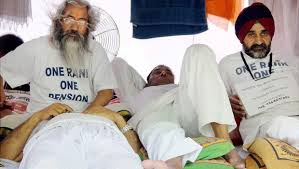

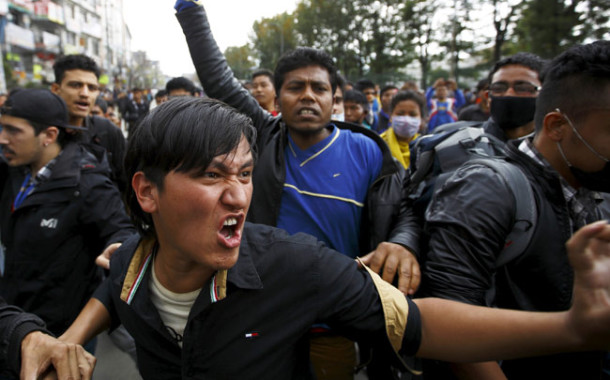
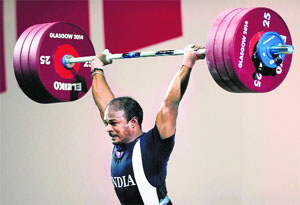






Recent Comments